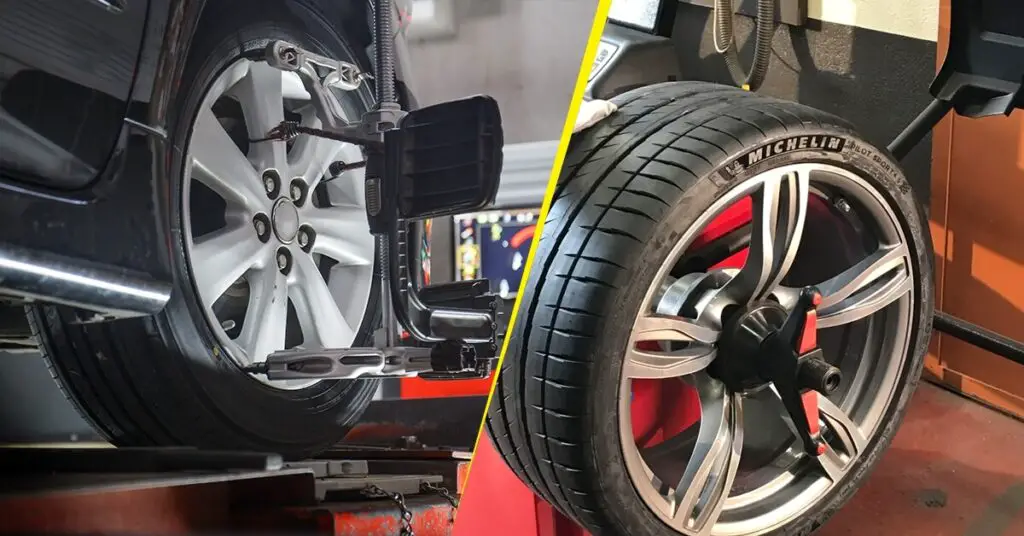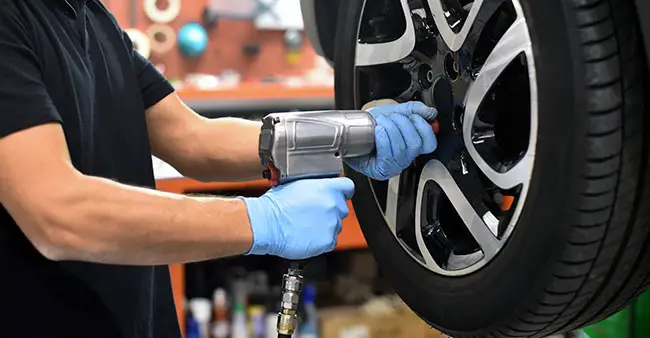Do rear tires need to be balanced? Yes, rear tires should always be balanced, just like the front tires. Proper balancing ensures a smoother ride, reduces vibrations, improves tire lifespan, and enhances overall vehicle performance, particularly for handling and safety.
When you think of tire balancing, it’s easy to assume that only the front tires need attention, especially in front-wheel-drive (FWD) or rear-wheel-drive (RWD) vehicles. However, do rear tires need to be balanced? The answer is not just a simple “yes” or “no” but involves understanding the importance of balancing all four tires, regardless of their position.
Proper balancing of all tires, including the rear ones, is important for a smooth, comfortable ride, better fuel efficiency, and a longer lifespan for both your tires and vehicle components.
In this detailed guide, we will discuss why balancing rear tires is essential, how it works, when it should be done, and the signs that indicate your rear tires need balancing. We will also clarify any misconceptions about rear tire balancing and give you all the information you need to keep your vehicle performing at its best.

Contents
What is Tire Balancing?
Tire balancing involves adjusting the tire and wheel assembly so that it rotates evenly. This process helps distribute the weight of the tire and wheel uniformly around the axle. If a tire is out of balance, it can create uneven wear and vibrations, which are most noticeable at higher speeds. Balancing ensures that tires wear evenly and that your car operates smoothly and efficiently.
Why is Balancing Rear Tires Important?
When most people think about tire balancing, they focus on the front tires. After all, the front tires bear more of the weight, especially in front-wheel-drive vehicles. However, rear tires also play a significant role in the vehicle’s stability, handling, and overall performance. Here are several reasons why balancing rear tires is just as important:
Vibration Reduction
If your rear tires are unbalanced, you may feel vibrations through the steering wheel or the seat. This vibration becomes more noticeable at higher speeds and can be uncomfortable for passengers. Balancing the rear tires ensures that the ride is smooth, reducing these vibrations.
Even Tire Wear
Unbalanced rear tires will wear unevenly, which can lead to faster tire degradation. This uneven wear pattern is not only bad for the tires but can also affect the vehicle’s handling and stability, making it harder to control the car, especially on turns or during braking.
Improved Fuel Efficiency
When tires are properly balanced, the vehicle experiences less rolling resistance, which means the engine doesn’t have to work as hard to move the car. Unbalanced tires create additional drag, reducing fuel efficiency. Balancing your rear tires improves the car’s fuel economy, ultimately saving you money at the pump.
Increased Safety
Properly balanced tires, both front and rear, improve vehicle handling and reduce the risk of accidents caused by poor traction. When all four tires are in balance, the car handles better during cornering, braking, and acceleration. This is especially important for the rear tires, which play a role in the car’s overall stability and traction.

When Should Rear Tires Be Balanced?
Tire balancing isn’t something that needs to be done frequently unless there’s an issue. However, there are certain times when it’s crucial to balance the rear tires:
1. After Installing New Tires
Whenever you install new tires, it’s essential to balance them, whether on the front or rear axle. New tires may have minor imbalances due to variations in manufacturing, and balancing corrects these minor discrepancies.
2. During Tire Rotation
It’s important to balance tires during regular tire rotations. If you rotate your tires every 5,000 to 7,500 miles, balancing is part of the process. Tire rotation helps ensure even wear, and balancing helps maintain a smooth ride.
3. After Hitting a Pothole or Curb
If you hit a large pothole or curb, it’s a good idea to have your tires checked and balanced. Sudden impacts can disrupt the balance of the tires and cause vibrations or uneven wear. This can be especially noticeable in the rear tires, as they may bear the brunt of the impact.
4. When You Feel Vibration or Uneven Wear
If you notice any vibrations in the seat or the floorboard, or if the rear tires show signs of uneven wear, it’s time to get them balanced. Even small vibrations can worsen over time, leading to more significant issues with your tires and suspension components.
How Are Rear Tires Balanced?
The process of balancing rear tires is very similar to balancing front tires, and it’s done using a balancing machine. Here’s how it works:
1. Mounting the Tire on a Balancing Machine
The tire and wheel assembly are mounted onto a balancing machine that spins the wheel at a high speed. The machine detects any imbalances in the tire and wheel assembly.
2. Identifying the Imbalance
The machine uses sensors to identify any areas where the weight distribution is uneven. These areas are typically around the rim of the wheel, where small adjustments are made.
3. Adding Weights
Once the imbalance is detected, small weights are placed on the wheel rim to correct the imbalance. These weights help distribute the weight evenly across the tire and wheel assembly.
4. Rechecking the Balance
After the weights are applied, the machine spins the tire again to ensure that it is properly balanced. If there is still any noticeable imbalance, further adjustments are made until the tire is balanced correctly.
How to Tell if Your Rear Tires Need Balancing
Here are some common symptoms that suggest your rear tires may be unbalanced:
1. Vibrations at High Speeds
If you notice vibrations through the seat or floorboard, especially when driving at higher speeds, it may indicate that your rear tires are out of balance. These vibrations typically become more pronounced as the vehicle speeds up.
2. Uneven Tire Wear
Uneven or rapid tread wear on one side of the tire can signal an imbalance. This can cause the tire to wear out more quickly, potentially leading to premature tire replacement.
3. Poor Handling or Steering
Unbalanced rear tires can affect the overall handling of the vehicle. If the car feels unstable or pulls to one side, it’s a good indication that the rear tires may be unbalanced.
4. Noisy Tires
Unbalanced tires can also cause unusual noises such as humming or thumping, particularly at higher speeds. If you hear unusual tire noise, it could be a sign of imbalance.
Frequently Asked Questions
Here are some FAQs about rear tire balancing –
1. Can I balance rear tires myself?
While it is possible to balance tires yourself using a static balancing method, it is highly recommended to have your rear tires balanced by a professional using a dynamic balancing machine for optimal accuracy and safety.
2. How often should I balance my rear tires?
It’s generally recommended to balance your rear tires every time you replace the tires, rotate them, or if you experience vibrations or uneven wear.
3. Will unbalanced rear tires cause my car to pull to one side?
Yes, unbalanced rear tires can cause your vehicle to pull to one side, affecting steering and handling. This can be dangerous, especially at higher speeds.
4. Can I rotate my tires without balancing them?
It’s not ideal to rotate your tires without balancing them. Tire balancing should be checked and adjusted during tire rotation to ensure even wear and smooth operation.
5. What happens if my rear tires are not balanced?
If rear tires are not balanced, it can lead to vibrations, uneven tire wear, poor handling, and decreased fuel efficiency. It can also cause strain on suspension components, leading to costly repairs.
Conclusion
Rear tires play a critical role in maintaining vehicle stability, comfort, and overall performance. Balancing rear tires ensures that your vehicle runs smoothly, reduces vibrations, improves tire life, and enhances safety. If you notice any signs of imbalance, such as vibrations or uneven tire wear, it’s important to have your rear tires balanced promptly.